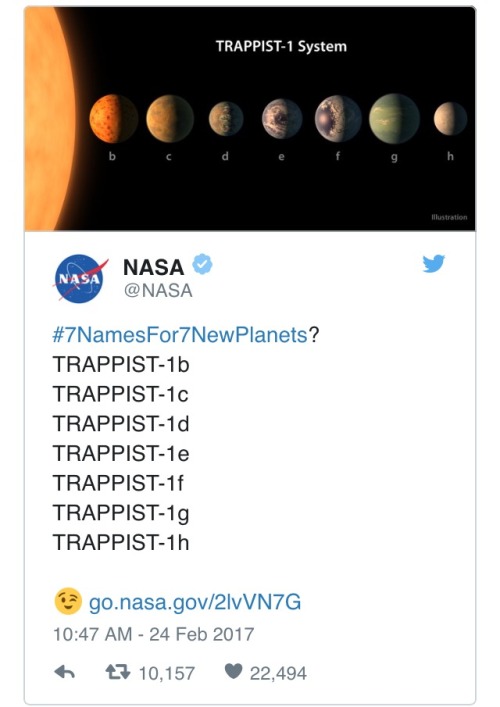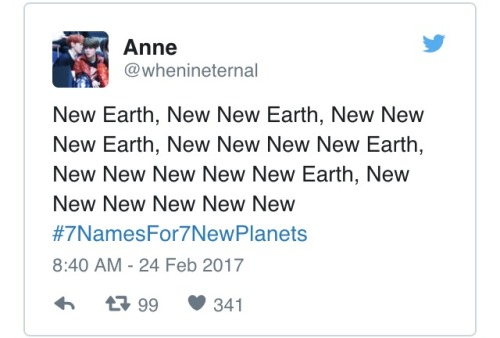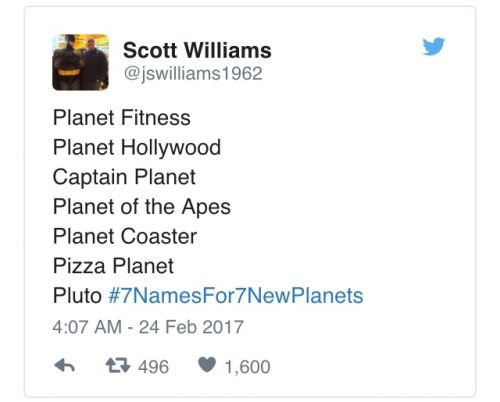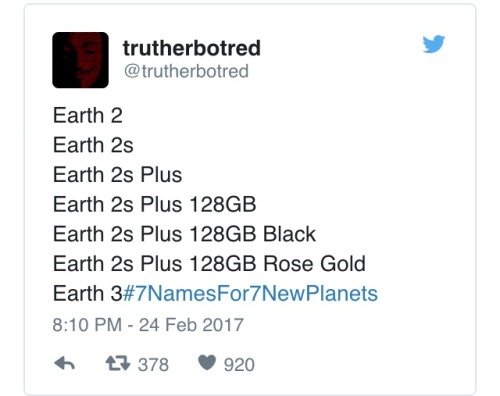Raising The Bar For Antimatter Exploration
Raising the bar for antimatter exploration
CERN - European Organization for Nuclear Research logo. March 18, 2017 The absence of antimatter in the universe is a long-standing jigsaw puzzle in physics. Many experiments have been exploring this question by finding asymmetries between particles and their antimatter counterparts. GBAR (Gravitational Behaviour of Antihydrogen at Rest), a new experiment at CERN, is preparing to explore one aspect of this puzzle – what is the effect of gravity on antimatter? While theories exist as to whether antimatter will behave like matter or not, a definitive experimental result is still missing.
Image above: Installation of the GBAR linac in its shielding bunker. The electrons accelerated to 10 MeV toward a target will produce the positrons that are necessary to form antihydrogen with the antiprotons coming from the ELENA decelerator. (Image: Max Brice/CERN). GBAR will measure the effect of gravity on antihydrogen atoms. Located in the Antiproton Decelerator (AD) hall, GBAR is the first of five experiments that will be connected to the new ELENA deceleration ring. On 1 March, the first component of the experiment was installed – a linear accelerator (linac). In sharp contrast to the LHC’s chain of big accelerators and fast particles, the AD world of antimatter is small and its particles are as slow as they come. The GBAR linac is only 1.2 metres long and it will be used to create positrons, the antimatter equivalent of electrons. The experiment will use antiprotons supplied by ELENA and positrons created by the linac to produce antihydrogen ions. They consist of one antiproton and two positrons, and their positive charge makes them significantly easier to manipulate. With the help of lasers, their velocity will be reduced to half a metre per second. This will allow them to be directed to a fixed point. Then, trapped by an electric field, one of their positrons will be removed with a laser, which will make them neutral again. The only force acting on them at this point will be gravity and they will be free to make a 20-centimetre fall, during which researchers will observe their behaviour. The results might turn out to be very exciting. As the spokesperson of GBAR, Patrice Pérez, explains: “Einstein’s Equivalence Principle states that the trajectory of a particle is independent of its composition and internal structure when it is only submitted to gravitational forces. If we find out that gravity has a different effect on antimatter, this would mean that we still have a lot to learn about the universe.” Five other experiments are based at the Antiproton Decelerator, two of which – AEGIS and ALPHA – are also studying the effect of gravity on antimatter. Note: CERN, the European Organization for Nuclear Research, is one of the world’s largest and most respected centres for scientific research. Its business is fundamental physics, finding out what the Universe is made of and how it works. At CERN, the world’s largest and most complex scientific instruments are used to study the basic constituents of matter — the fundamental particles. By studying what happens when these particles collide, physicists learn about the laws of Nature. The instruments used at CERN are particle accelerators and detectors. Accelerators boost beams of particles to high energies before they are made to collide with each other or with stationary targets. Detectors observe and record the results of these collisions. Founded in 1954, the CERN Laboratory sits astride the Franco–Swiss border near Geneva. It was one of Europe’s first joint ventures and now has 22 Member States. Related links: GBAR (Gravitational Behaviour of Antihydrogen at Rest): https://gbar.web.cern.ch/GBAR/public/index.html Antiproton Decelerator (AD): https://home.cern/about/accelerators/antiproton-decelerator ELENA: http://home.cern/about/updates/2016/11/new-ring-slow-down-antimatter linear accelerator (linac): http://home.cern/tags/linear-accelerator AEGIS: http://home.cern/about/experiments/aegis ALPHA: https://home.cern/about/experiments/alpha For more information about European Organization for Nuclear Research (CERN), Visit: http://home.cern/ Image (mentioned), Text, Credits: CERN/Iva Raynova. Greetings, Orbiter.ch Full article
More Posts from Fillthevoid-with-space and Others
Heads up, this is tomorrow night! I hope it's clear where I am to see it but considering I'm in the Pacific Northwest, I don't have super high hopes. Get a look if you can, though! Rare to see a blue moon that's actually red :)
A Total Lunar Eclipse is Coming: 10 Things to Know
If you were captivated by August’s total solar eclipse, there’s another sky show to look forward to on Jan. 31: a total lunar eclipse!

Below are 10 things to know about this astronomical event, including where to see it, why it turns the Moon into a deep red color and more…
1. First things first. What’s the difference between solar and lunar eclipses? We’ve got the quick and easy explanation in this video:
2. Location, location, location. What you see will depend on where you are. The total lunar eclipse will favor the western U.S., Alaska, Hawaii, and British Columbia on Jan. 31. Australia and the Pacific Ocean are also well placed to see a major portion of the eclipse, if not all of it.

3. Color play. So, why does the Moon turn red during a lunar eclipse? Here’s your answer:
4. Scientists, stand by. What science can be done during a lunar eclipse? Find out HERE.
5. Show and tell. What would Earth look like from the Moon during a lunar eclipse? See for yourself with this artist’s concept HERE.
6. Ask me anything. Mark your calendars to learn more about the Moon during our our Reddit AMA happening Monday, Jan. 29, from 3-4 pm EST/12-1 pm PST.

7. Social cues. Make sure to follow @NASAMoon and @LRO_NASA for all of the latest Moon news leading up to the eclipse and beyond.
8. Watch year-round. Can’t get enough of observing the Moon? Make a DIY Moon Phases Calendar and Calculator that will keep all of the dates and times for the year’s moon phases right at your fingertips HERE.

Then, jot down notes and record your own illustrations of the Moon with a Moon observation journal, available to download and print from moon.nasa.gov.
9. Lesson learned. For educators, pique your students’ curiosities about the lunar eclipse with this Teachable Moment HERE.
10. Coming attraction. There will be one more lunar eclipse this year on July 27, 2018. But you might need your passport—it will only be visible from central Africa and central Asia. The next lunar eclipse that can be seen all over the U.S. will be on Jan. 21, 2019. It won’t be a blue moon, but it will be a supermoon.
Make sure to follow us on Tumblr for your regular dose of space: http://nasa.tumblr.com.

TODAY IN HISTORY: The first-ever color image of Mars, taken by NASA’s Viking 1 lander on July 21, 1976. (San Diego Air & Space Museum)

The process of making an audio and visual compilation to explain Earth and humanity to an alien species is an incredible undertaking, and Carl Sagan undertook it in 1977. The resulting record from his little team was sent out with the Voyager 1 and 2 probes and is now in interstellar space, but there was also a more personal result of this project. Learn about Sagan and his third wife’s meet-cute and also hear what is actually out there in the stars, conveying the best humanity had to offer in the 70s.
Below the cut are my sources, music credits, a vocab list, and the transcript of this episode. Vote on what you think I should research next by messaging me here, tweeting at me at @HDandtheVoid, or asking me to my face if you know me in real life. And please subscribe to the podcast on iTunes, rate it and maybe review it, and tell friends if you think they’d like to listen!
(My thoughts on the next episode are space race history, the transit of Venus, Edmond Halley, or Dark Sky Preserves. Next episode will be up on December 4th.)
Glossary
electroencephalography (EEG) - a recording that displays brainwave activity by measuring the electrical impulses of neurons firing in the brain
heliosheath - the outer region of the heliosphere. It is just beyond termination shock, the point where solar wind abruptly slows down and becomes denser and hotter as it presses outward against the approaching wind in interstellar space.
heliosphere - a huge wind sock-shaped bubble that extends beyond Pluto’s orbit and contains our solar system, solar wind, and the entire solar magnetic field.
Transcript
Sources
Drunk History episode transcript
Golden record via NASA
Carl Sagan via Smithsonian Magazine, March 2014
Carl Sagan via Biography.com
Carl Sagan via National Geographic
The Voyager project love story via NASA
Ann Druyen: “We know that EEG patterns register some changes in thought. Would it be possible, I wondered, for a highly advanced technology of several million years from now to actually decipher human thoughts?"
Ann Druyen: "a mental itinerary of the ideas and individuals of history whose memory I hoped to perpetuate."
Ann Druyen: "My feelings as a 27-year-old woman, madly fallen in love, they're on that record. It's forever. It'll be true 100 million years from now. For me, Voyager is a kind of joy so powerful, it robs you of your fear of death."
Arthur C. Clarke: "Please leave me alone; let me go on to the stars."
How 8-track tapes work via 8 Track Heaven
How vinyl records work via The Guardian, June 2010
Golden record via Smithsonian Magazine, April 2012
Golden record via the JPL at NASA
Golden record retrospective by Timothy Ferris via The New Yorker, August 2017
Voyager Golden Record - Greetings In 55 Languages via YouTube
The 116 images NASA wants aliens to see via YouTube
The Voyagers documentary by Penny Lane via Brain Pickings
Ann Druyen: “Carl and I knew we were the beneficiaries of chance, that pure chance could be so kind that we could find one another in the vastness of space and the immensity of time. We knew that every moment should be cherished as the precious and unlikely coincidence that it was.”
Article on Sagan’s divorce from Linda Salzman Sagan via People, December 1980
Article on Sagan’s divorce from Linda Salzman Sagan via The Cornell Daily Sun, March 1981
Voyager record available on Soundcloud via Cosmos Magazine
Golden record now available for purchase via The Atlantic, August 2017
Intro Music: ‘Better Times Will Come’ by No Luck Club off their album Prosperity
Filler Music: ‘Dark Was The Night, Cold Was The Ground’ by Blind Willie Johnson (1897-1945) off the album Dark Was The Night ‘Carl Sagan’ by Loch Lomond off their album Paper The Walls
Outro Music: ‘Fields of Russia’ by Mutefish off their album On Draught
I found a bizarre open-access, peer-review journal of STEM research. It was hard for me to find anything that pertained to astronomy or any of the stellar studies, but I did find a couple categories I could investigate:
Astrobiology
Astronomical Sciences
Spectroscopy (I didn’t see any astronomical spectroscopy stuff but who knows)
Just looking at the articles popping up suggests that it would take some serious digging to find anything (and I would certainly have to work on my keyword optimization techniques because typing ‘space’ into the search bar got me nothing relevant to my interests), but it’s a new potential resource! And for anyone who wants to find a way to publish in STEM fields, maybe it’s something worth checking out?
If Earth had Saturn’s Rings
From an excellent post by Jason Davis
From Washington, D.C., the rings would only fill a portion of the sky, but appear striking nonetheless. Here, we see them at sunrise.

From Guatemala, only 14 degrees above the equator, the rings would begin to stretch across the horizon. Their reflected light would make the moon much brighter.

From Earth’s equator, Saturn’s rings would be viewed edge-on, appearing as a thin, bright line bisecting the sky.

At the March and September equinoxes, the Sun would be positioned directly over the rings, casting a dramatic shadow at the equator.

At midnight at the Tropic of Capricorn, which sits at 23 degrees south latitude, the Earth casts a shadow over the middle of the rings, while the outer portions remain lit.

via x

The last look before her descent in fire…

I had to skip last week to finish an article on STEM but it got me a really awesome intro to a very serious episode. Learn this week about 1) Sally Ride (a bit, just like the highlight reel on her) 2) NASA’s space shuttle program 3) the Challenger disaster that occurred January 28, 1986. It was the anniversary of this tragedy yesterday and I wanted to learn more about it and why it happened and what, ultimately, came out of that difficult time in the space shuttle program.
I have a quick and easy way for you to cut out listening to the actual recap of the disaster if you don’t want to hear about it and just want to hear the fun space shuttle facts and the changes that NASA undertook in learning from Challenger’s destruction. Below the cut are my sources, music credits, a vocab list, and the transcript of this episode. I’ve bolded those sources I mention in the podcast, and I do have a trigger warning for the actual, live-coverage footage of the Challenger disaster. Please let me know what you think I should research next by messaging me here, tweeting at me at @HDandtheVoid, or asking me to my face if you know me. I’d love it if you would subscribe on iTunes (especially since I seem to have so many problems this month with consistent timing), rate my humble little podcast and maybe review it, and tell friends if you think they’d like to hear it!
(My thoughts on the next episode are national radio quiet zones, or I could go into the transit of Venus. The next episode will go up February 12th.)
Glossary
gimbaled - moveable. In a gimbaled thrust system for rockets, the exhaust nozzel of the rocket can be swiveled from side to side, which changes the direction of that thrust relative to rocket’s center of gravity.
pitch - in flight, this is rotation around the side-to-side axis. If the object’s nose points upwards or downwards, this is changing its pitch.
roll - in flight, this is rotation around the front-to-back axis. If the object’s wings spin from horizontal to vertical, it’s rolling.
yaw - in flight, this is rotation around the vertical axis. If the pilot turns the object so they can see more to the left or to the right, with no change in the horizon’s position, this is changing its yaw.
Script/Transcript
Sources
Sally Ride (for K-4) via NASA
Sally Ride bio via NASA
Sally Ride via the Smithsonian National Air and Space Museum
Sally Ride and her sexuality via Slates blog ‘Outward’ (May 2014)
Sexual Orientation Discrimination Policy via NASA
“Employees should expect to find a diversity of sexual orientations at NASA. In the past, it was common practice to fire or to refuse to hire suspected homosexuals in the Federal workplace. Employees have been physically threatened, verbally abused, and subjected to hostile working conditions. Laws and policies have changed, and all NASA employees need to be aware of their responsibility to prevent this form of discrimination and to ensure that lesbian, gay, bisexual, and transgender (LGBT) individuals are an accepted and valued part of the diverse NASA workforce.”
Space shuttle era via NASA
1983-1986: The Missions and History of Space Shuttle Challenger via NASA Spaceflight
Space shuttle process via NASA (archived)
Space shuttle components via NASA
Gimbaled thrust via NASA
Roll, Pitch, and Yaw via the Smithsonian National Air and Space Museum
Typical shuttle mission via NASA
Challenger via Space.com (Nov 2017)
Challenger disaster via History.com — contains an autoplay video
Challenger disaster live on CNN via YouTube (Jan 2011)—tw: destruction occurs at timecode 1:35
Challenger myths debunked via National Geographic (Jan 2016)
Intro Music: ‘Better Times Will Come’ by No Luck Club off their album Prosperity
Filler Music: ‘Repent’ by Dreamend off their album And So I Ate Myself, Bite By Bite, which has cover art that scared the hell out of me when my friend gave it to me because I was on painkillers for a shattered radial head. Really good band, though.
Outro Music: ‘Fields of Russia’ by Mutefish off their album On Draught

When I was in Ireland in 2013, I kept seeing signs for ‘quasar.’ I finally learned that it’s the European way of saying laser tag. It has nothing to do with quasars, which are a specific type of a specific type of galaxy. Listen to this week’s (pretty short) podcast on two types of active galaxies: quasars and blazars.
Below the cut, I have the transcript, sources, music credits, and timeline of people I talked about! If you have suggestions for topics I could cover, please send me a Tumblr message or tweet at me on Twitter at @HDandtheVoid, or you can ask me to my face if you know me. Please subscribe on iTunes, rate my podcast and maybe review it, and tell friends if you think they’d like to hear it!
(My thoughts on the next episode are the SOFIA observatory, Chuck Yaeger, or the great Stephen Hawking. The next episode will go up April 2nd.)
Glossary
active galaxy or active galactic nucleus- a galaxy with a small core of emission embedded at the center. This core is typically very variable and very bright compared to the rest of the galaxy. These galaxies emit much more energy than they should; this excess energy is found in the infrared, radio, UV, and X-ray regions of the electromagnetic spectrum.
blazar - a subcategory of active galaxy, it is an extremely bright, distant object, powered by a black hole, which emits massive amounts of energy. It is distinct from a quasar because it is even brighter.
extragalactic objects - objects outside our Milky Way galaxy.
interferometry - a group of techniques to extract information from superimposing electromagnetic waves to create interference. In radio astronomy, this is done by using a wide spread of receivers to look at the same distant object, then bringing that data together with a correlator that can create a larger, clearer picture than an individual radio telescope alone could.
lunar occultations - when stars pass behind the Moon. This is the basis for a method of determining and mapping star positions.
quasar - a subcategory of active galaxy, it is an extremely bright, distant object, powered by a black hole, which emits massive amounts of energy. It is distinct from a blazar because it is less-bright. The name is a contraction of “quasi-stellar radio source” (which is not necessarily true of all quasars—90% are radio-quiet).
torus - a donut shape.
Script/Transcript
Timeline
Walter Baade, German (1893-1960)
Rudolph Minkowski, German-American (1895-1976)
Fritz Zwicky, Swiss (1898-1974)
Gordon Stanley, New Zealander (1921-2001)
John Bolton, English-Australian (1922-1993)
Owen Bruce Slee, Australian (1924-2016)
Allan Rex Sandage, American (1926-2010)
Cyril Hazard, English (1928- )
Maartin Schmidt, Dutch (1929- )
Hong-Yee Chiu, American (1932- )
Stephen Hawking, English (1942 -2018)
Jedidah Isler
Sources
Active Galaxies via NASA (Dec 2016)
Galaxy shapes via Cornell University (April 2000)
Galaxies and Black Holes by David Merritt, published on NED by Caltech and NASA
Cyril Hazard via University of Pittsburgh
The Discovery of Quasars and its Aftermath via Journal of Astronomical History and Heritage (2014)
“Characteristically, Fritz Zwicky (1898–1974; Figure 11) immediately pointed out that ‘All of the five quasi-stellar galaxies described individually by Sandage (1965) evidently belong to the subclass of compact galaxies with pure emission spectra previously discovered and described by the present writer. (Zwicky, 1965: 1293).’ A few years later, Zwicky was less circumspect and wrote: ‘In spite of all these facts being known to him in 1964, Sandage attempted one of the most astounding feats of plagiarism by announcing the existence of a major new component of the Universe: the quasi-stellar galaxies ... Sandage‘s earthshaking discovery consisted in nothing more than renaming compact galaxies, calling them ‘interlopers‘ and quasistellar galaxies, thus playing the interloper himself. (Zwicky and Zwicky, 1971: xix)’”
Lunar occultations via Sky and Telescope
Quasars and Blazars by Matthew Whiting (a chapter in his thesis, What made the quasar blush? Emission mechanisms in optically-red quasars) via the Australia Telescope National Facility (2000)
Jedidah Isler on quasars and blazars via TED Talks (March 2015)
Quasar definition via Space.com (Feb 2018)
Intro Music: ‘Better Times Will Come’ by No Luck Club off their album Prosperity
Filler Music: ‘Into The White’ by Pixies off their album Wave of Mutilation.
Outro Music: ‘Fields of Russia’ by Mutefish off their album On Draught

Next Generation Spacesuit like Second Skin
Scientists from MIT have designed a next-generation spacesuit that acts practically as a second skin, and could revolutionize the way future astronauts travel into space. (Photo : Jose-Luis Olivares/MIT)
Astronauts are used to climbing into conventional bulky, gas-pressurized spacesuits, but this new design could allow them to travel in style. Soon they may don a lightweight, skintight and stretchy garment lined with tiny, muscle-like coils. Essentially the new suit acts like a giant piece of shrink-wrap, in which the coils contract and tighten when plugged into a power supply, thereby creating a “second skin.”
“With conventional spacesuits, you’re essentially in a balloon of gas that’s providing you with the necessary one-third of an atmosphere [of pressure,] to keep you alive in the vacuum of space,” lead researcher Dava Newman, a professor of aeronautics and astronautics and engineering systems at MIT, said in astatement.
“We want to achieve that same pressurization, but through mechanical counterpressure - applying the pressure directly to the skin, thus avoiding the gas pressure altogether. We combine passive elastics with active materials. … Ultimately, the big advantage is mobility, and a very lightweight suit for planetary exploration.”
Newman, who has worked for the past decade on a design for the next-generation spacesuit, describes the new garment in detail in the journal IEEE/ASME: Transactions on Mechatronics.
The MIT BioSuit’s coils, which are a main feature of the outfit, are made from a shape-memory alloy (SMA). At a certain temperature, the material can “remember” and spring back to its engineered shape after being bent or misshapen.
Skintight suits are not a novel idea, but in the past scientists have always struggled with the question: how do you get in and out of a suit that is so tight? That’s where the SMAs come in, allowing the suit to contract only when heated, and subsequently stretched back to a looser shape when cooled.
Though the lightweight suit may not seem at first like it can withstand the harsh environment that is outer space, Newman and his colleagues are sure that the BioSuit would not only give astronauts much more freedom during planetary exploration, but it would also fully support these space explorers.
Newman and his team are not only working on how to keep the suit tight for long periods of time, but also believe their design could be applied to other attires, such as athletic wear or military uniforms.
“An integrated suit is exciting to think about to enhance human performance,” Newman added. “We’re trying to keep our astronauts alive, safe, and mobile, but these designs are not just for use in space.”
-
 prnh reblogged this · 8 years ago
prnh reblogged this · 8 years ago -
 fillthevoid-with-space reblogged this · 8 years ago
fillthevoid-with-space reblogged this · 8 years ago -
 reubenindustries reblogged this · 8 years ago
reubenindustries reblogged this · 8 years ago -
 brashka liked this · 8 years ago
brashka liked this · 8 years ago -
 iamacar liked this · 8 years ago
iamacar liked this · 8 years ago -
 saltball liked this · 8 years ago
saltball liked this · 8 years ago -
 izzydron3 liked this · 8 years ago
izzydron3 liked this · 8 years ago -
 haramless liked this · 8 years ago
haramless liked this · 8 years ago -
 catshapeddarkness liked this · 8 years ago
catshapeddarkness liked this · 8 years ago -
 spookiispock liked this · 8 years ago
spookiispock liked this · 8 years ago -
 putrefying-plant-life reblogged this · 8 years ago
putrefying-plant-life reblogged this · 8 years ago -
 putrefying-plant-life liked this · 8 years ago
putrefying-plant-life liked this · 8 years ago -
 shadowchronical liked this · 8 years ago
shadowchronical liked this · 8 years ago -
 king-j123-blog liked this · 8 years ago
king-j123-blog liked this · 8 years ago -
 oh-so-many-science-things liked this · 8 years ago
oh-so-many-science-things liked this · 8 years ago -
 rrangersblog liked this · 8 years ago
rrangersblog liked this · 8 years ago -
 sleepaddict liked this · 8 years ago
sleepaddict liked this · 8 years ago -
 thesizthsign-blog reblogged this · 8 years ago
thesizthsign-blog reblogged this · 8 years ago -
 thesizthsign-blog liked this · 8 years ago
thesizthsign-blog liked this · 8 years ago -
 johnnyreyna liked this · 8 years ago
johnnyreyna liked this · 8 years ago -
 photowizard17 liked this · 8 years ago
photowizard17 liked this · 8 years ago -
 ironmanjax liked this · 8 years ago
ironmanjax liked this · 8 years ago -
 mega-spacepants liked this · 8 years ago
mega-spacepants liked this · 8 years ago -
 frostiecrown reblogged this · 8 years ago
frostiecrown reblogged this · 8 years ago -
 shrlckjhn reblogged this · 8 years ago
shrlckjhn reblogged this · 8 years ago -
 shrlckjhn liked this · 8 years ago
shrlckjhn liked this · 8 years ago -
 prnh liked this · 8 years ago
prnh liked this · 8 years ago -
 michesfishes21-blog liked this · 8 years ago
michesfishes21-blog liked this · 8 years ago -
 michesfishes21-blog reblogged this · 8 years ago
michesfishes21-blog reblogged this · 8 years ago -
 multiverseman liked this · 8 years ago
multiverseman liked this · 8 years ago -
 chris81554 liked this · 8 years ago
chris81554 liked this · 8 years ago -
 mistertotality liked this · 8 years ago
mistertotality liked this · 8 years ago -
 23theory23 reblogged this · 8 years ago
23theory23 reblogged this · 8 years ago -
 23theory23 liked this · 8 years ago
23theory23 liked this · 8 years ago -
 tminor4 liked this · 8 years ago
tminor4 liked this · 8 years ago -
 spaceexp reblogged this · 8 years ago
spaceexp reblogged this · 8 years ago
A podcast project to fill the space in my heart and my time that used to be filled with academic research. In 2018, that space gets filled with... MORE SPACE! Cheerfully researched, painstakingly edited, informal as hell, definitely worth everyone's time.
243 posts








